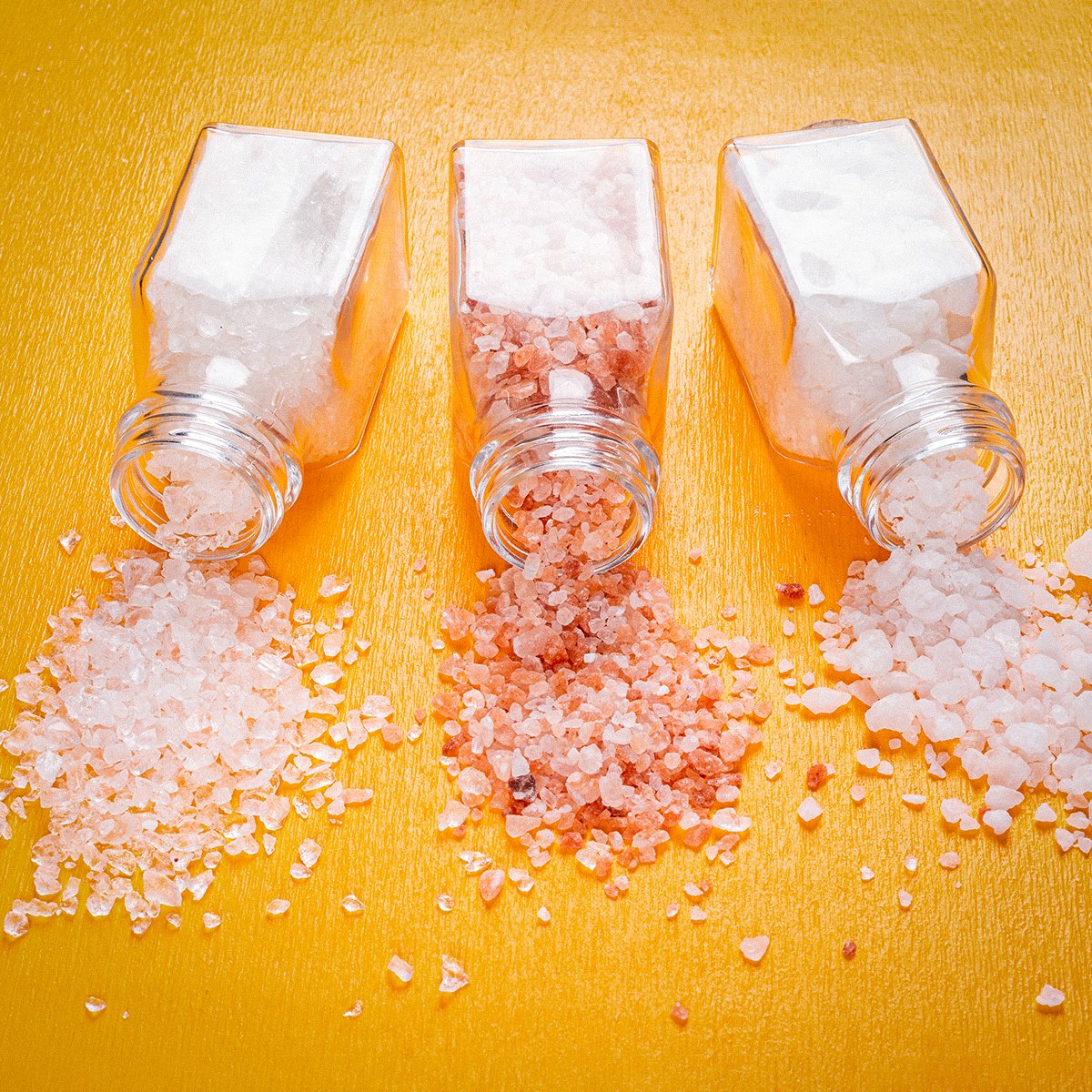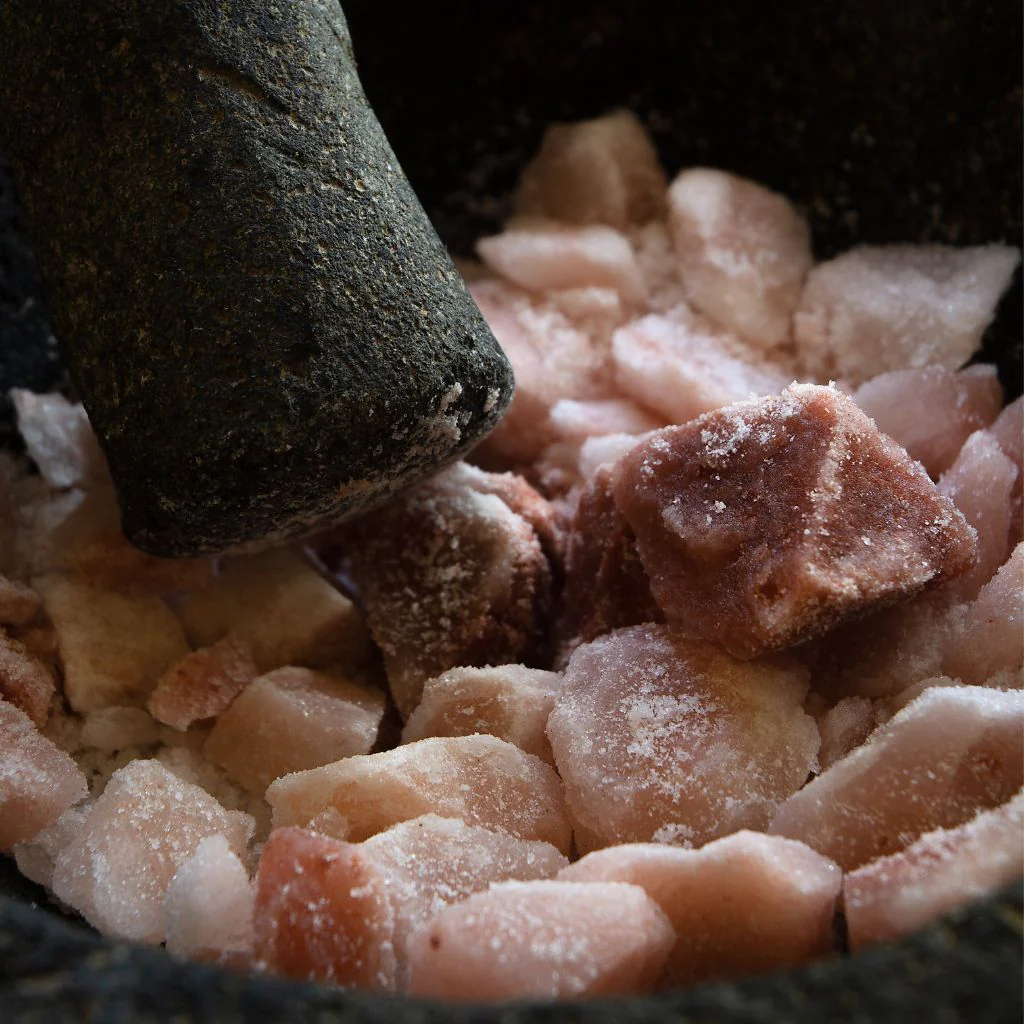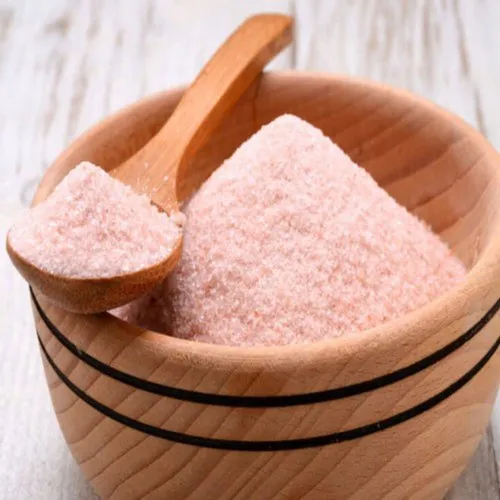
Pink Salt vs Normal Salt
There are a wide variety of halite, all with distinct health benefits. Although they all contain sodium chloride as the basic ingredient, Himalayan salt has additional health advantages over regular table salt.
The trace minerals found in Himalayan rock salt, such as potassium, iron, and zinc, are also helpful in performing jobs for our bodies. These beneficial minerals are absent in table salt. Furthermore, it is known that the common sea salt contains microplastics, added sugars, and aluminum, which would be unsafe for our brains.
Although Himalayan salt is a naturally derived source of sodium chloride, it has subtle yet significant differences that can make it more beneficial than the other.


What Is Salt?
Salt is a chemical compound primarily composed of sodium chloride. It is 98% sodium chloride by weight, so the terms "salt" and "sodium" can be used almost interchangeably. It may be obtained by evaporating salt water or extracting solid sodium chloride from underground salt mines.
Before table salt is shipped to stores, it is refined to rid the compound of impurities and other minerals that are not sodium chloride. At times, anticaking agents may be added to the sodium chloride to readily absorb moisture, and at times, iodine is added to act against its deficiency. People have used halite for years to flavor and preserve foods.
Sodium is an essential element for various biological activities, such as maintaining proper fluid balance, nerve conduction, and muscle contraction. Therefore, some amount of table salt or intake of sodium in some form is necessary in the diet.
However, some health experts argue that excessive intake of sodium may raise blood pressure, which may further lead to the development of heart disease. Recent research has helped cast this in serious doubt, though. Among the risks associated with too much table salt are those that have compelled many to switch to saindhava lavana as a supposedly healthier alternative.
What Is Pink Himalayan Salt?
Pink Himalayan salt is mined from the Khewra Salt Mines, located at the foothills of the Himalayas in Pakistan. That is one of the oldest and biggest salt mines in the world. It is believed that crystal salt harvested from this mine was formed millions of years ago from the evaporation of ancient bodies of water. This mineral salt is hand-harvested, minimally processed, and unrefined, hence much closer to nature without additives, which makes it way more natural than common halite.
Like table salt, Himalayan rock salt is mostly composed of sodium chloride. Still, through its natural harvesting process, a lot of the other minerals and trace elements are retained, unlike what occurs with regular table salt. Indeed, some estimates say that it truly contains as many as 80-90 different minerals and trace elements. Iron is responsible for the pink color of pink Himalayan salt, among other minerals.
Pink Himalayan Salt Nutritional Value
The harvesting process of Khewra salt ensures it retains many of its nutrients, boasting over 80 different minerals and elements! In just 1g of Himalayan pink salt, you'll find:
- 0.0369mg of Iron
- 368mg of Sodium
- 1.6mg of Calcium
- 2.8mg of Potassium
- 1.06mg of Magnesium
Overall, it has less sodium chloride than regular table salt but more trace minerals.
Is Pink Himalayan Salt More Beneficial Than Normal Salt?
Sodium is an important mineral that is contained within halite. It is used for muscle contractions and relaxations, as well as in the regulation of the water content of the body. But is pink salt healthier than halite? Himalayan salt, often promoted for its natural, unrefined nature, is alleged to contain over 84 trace minerals, including calcium, potassium, and magnesium. Nevertheless, since 98% of khewra salt consists of sodium chloride, the amount of these other minerals is in good quantity which provides added value in terms of health over period of consumption.
Which Is Better For Weight Loss: Pink Himalayan or Normal Salt?
Pink salt is considered healthier than halite because it is less refined and contains more basic nutrients. With saindhava lavana consumption, you can benefit from essential minerals including zinc, iron, calcium, and even iodine. Healthwise, crystal salt is nutritious and advantageous. Both salts are equal in sodium content by weight, but due to a higher mineral content gourmet salt is most preferred. Most importantly, though, it is advisable to take salt in moderation and avoid adding it to cooked food. The World Health Organization recommends that the intake of halite should be less than 5 grams, equal to one teaspoon.
Non-Dietary Uses of Pink Himalayan Salt
While rock salt does have several dietary uses, it also has some popular non-dietary uses. Many bath salts include this ingredient because it is said to heal skin conditions and relax sore muscles. It is also used in the creation of salt lamps, which remove air pollutants. A salt lamp is a large block of halite that contains an inner light source, which heats up the sodium chloride. Additionally, patients have been spending time in artificial salt caves made from pink Himalayan salt for skin and respiratory issues.
Final Thoughts On The Comparison
Ultimately, the decision between pink salt and regular salt comes down to what you prefer and what fits your dietary needs. saindhava lavana, rich in trace minerals and potential health perks, can add both flavor and a unique look to your dishes. On the other hand, regular halite is a dependable and budget-friendly option for everyday use. It's crucial to use both types in moderation. By understanding their differences, you can make well-informed choices for your cooking and health, enjoying the advantages each type offers.


Leave a Reply